Myobrace® for Juniors Stage 2 - J2
Arch expansion and continue habit correction
The J2 focuses on arch development and continuing habit correction. It is a firmer appliance, designed to promote arch development and the correct jaw relationship. It has small breathing holes to maintain continuous nasal breathing and myofunctional features to correct habits. Move to the J3 when the J2 has corrected the arch form, breathing and myofunctional habits.
Design Features
The design features of the J2 are suited to promote arch development while correcting breathing and myofunctional habits in the primary dentition.
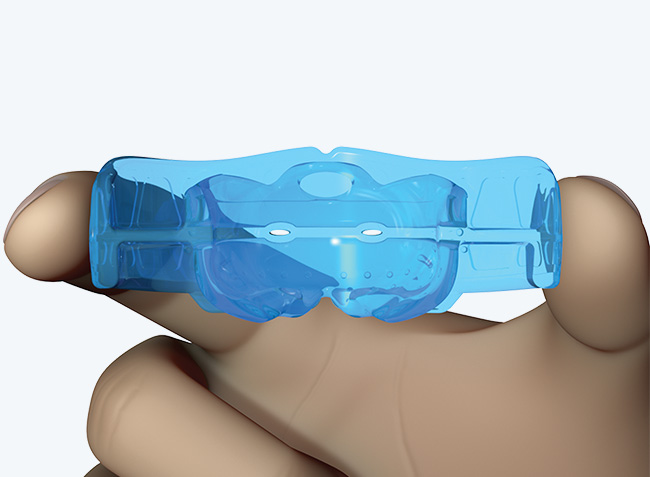
Firmer material
imparts extra force to promote arch development.

Small breathing holes
help to establish nasal breathing.
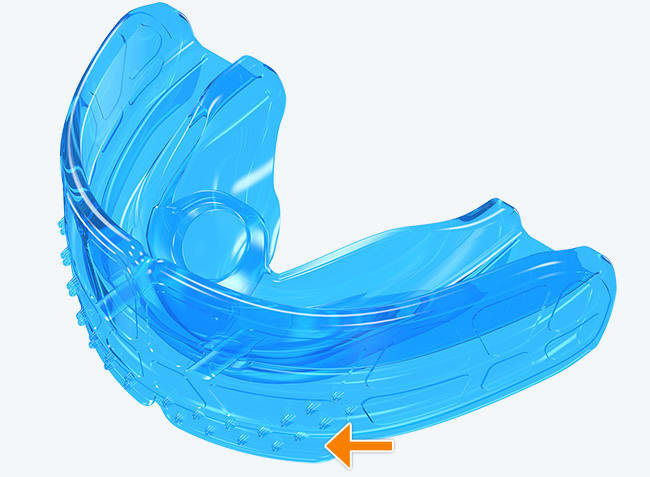
Lip bumper
discourages overactive lip muscles during a reverse swallow.
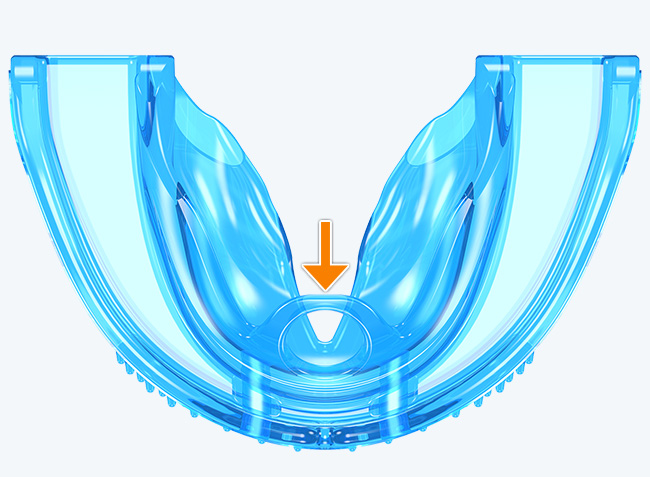
Hollow tongue tag
encourages correct tip of the tongue positioning.
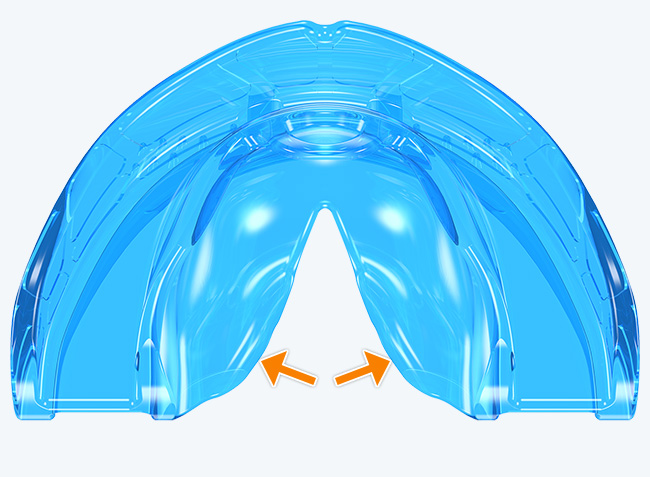
Tongue elevator
encourages the body of the tongue to rest in the roof of the mouth.
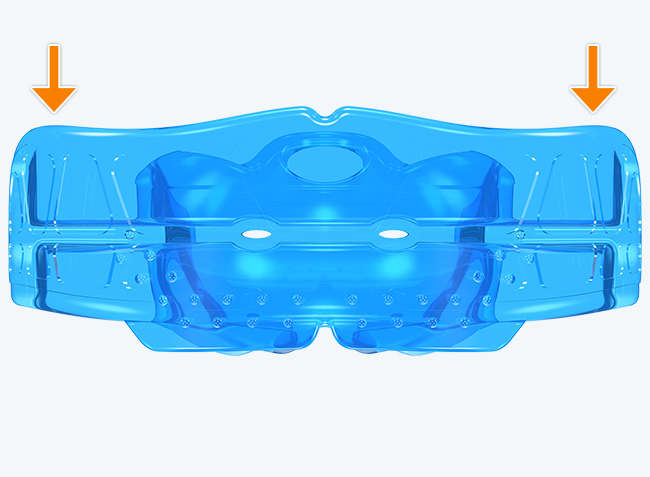
High sides
hold the soft tissues away, promoting arch development while optimising appliance retention.
Directions for Use
The Myobrace® appliance is to be used for one to two hours each day, plus overnight while sleeping. The patient's teeth may become slightly sensitive in the early stages of treatment. This is quite normal, however, if pain becomes excessive, decrease application time with the aim to build it back up once the appliance is accustomed to and sensitivity subsides.
Step 1
Hold the Myobrace® with the tongue tag facing up.
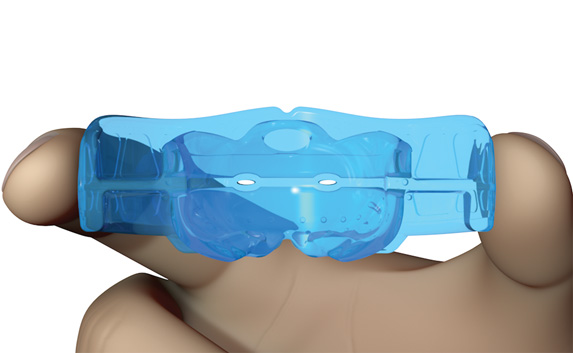
Step 2
Place the Myobrace® into your mouth.
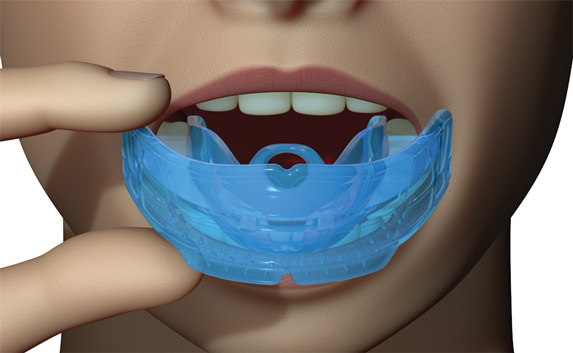
Step 3
Keep your tongue positioned on the tongue tag.
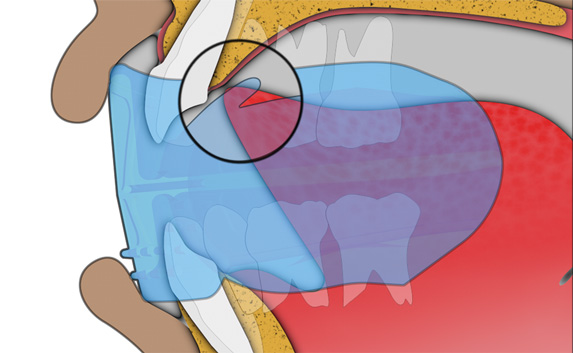
Step 4
Close down on the Myobrace® and feel it working to align your front teeth and jaws.
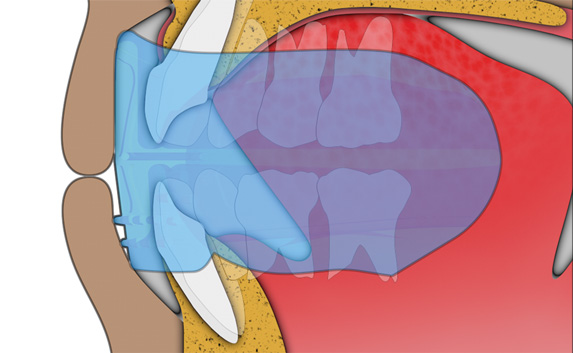
Step 5
Keep your lips together and breathe through your nose.
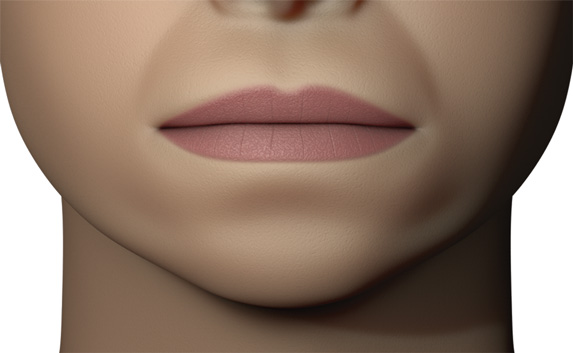
Cleaning the Appliance
The Myobrace® appliance should be cleaned under warm running water every time the patient removes it from their mouth.
Use Myoclean™ tablets to thoroughly clean twice a week. Myoclean™ is the recommended cleaning agent for all MRC appliances.
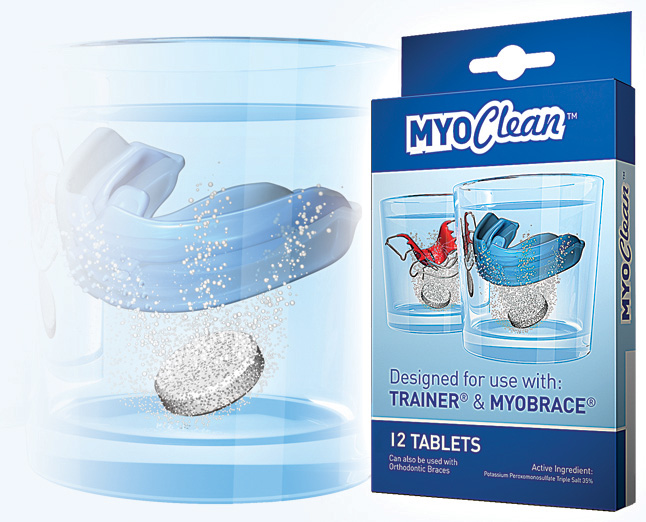
Case Studies
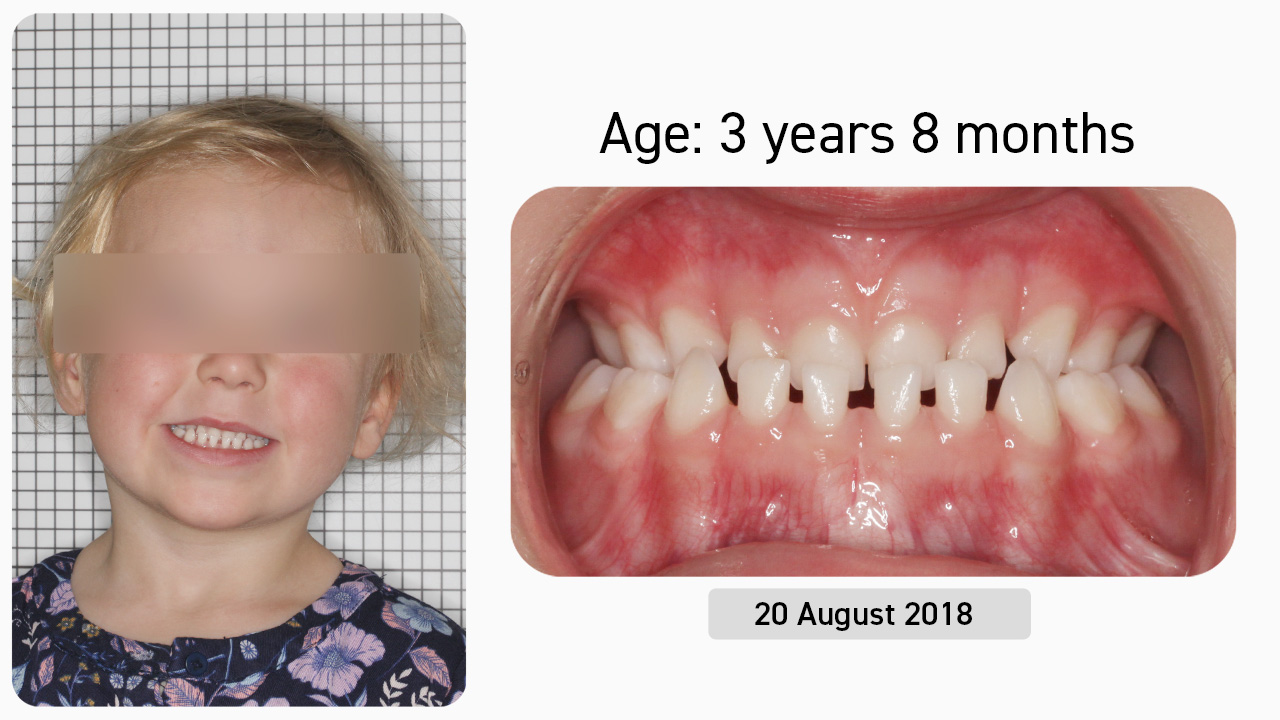
Case Study 1
This three-year-old female patient presented with the chief complaint of incorrect jaw development and wanted early interceptive treatment. After being presented with the various treatment options, the decision was made to undertake Myobrace® treatment, involving the use of the Myobrace® appliances in conjunction with Myolay™ and, given her young age, a simplifiedMyobrace®Activities program. For children below the age of five, we acknowledge that absolute compliance may be unrealistic, therefore, Myobrace® treatment is divided into two phases. Phase one is a six-month treatment program, aimed at early interception of mouth breathing and myofunctional disorders, with the goals of treatment being to establish nasal breathing and begin habit correction in order to promote good craniofacial growth and development. At age six or seven, the patient is then re-evaluated for consideration of phase two.
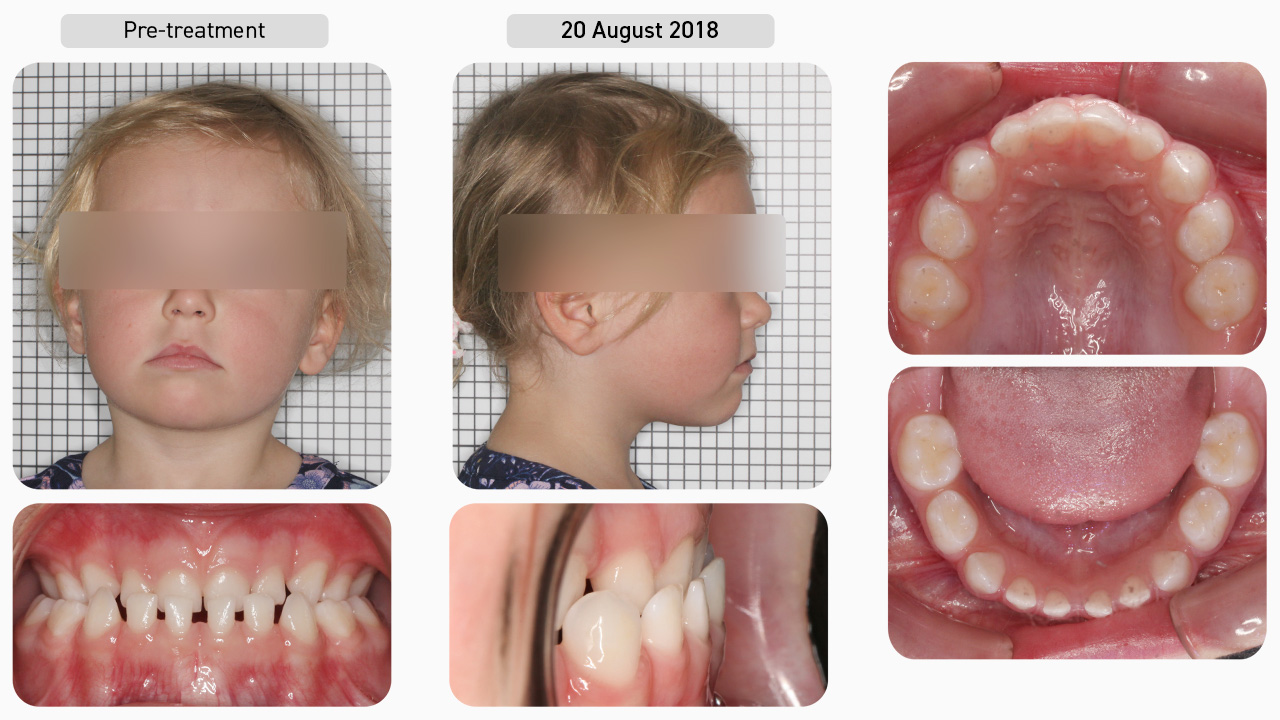
Pre-treatment
Using the Myofunctional Orthodontic Evaluation (MOE) form, we documented that this patient had a Class III malocclusion and bilateral posterior crossbite. The upper arch was severely underdeveloped in both the transverse and sagittal dimension, and there was a lack of spacing between the upper deciduous teeth. Her parents reported snoring and bruxism, and her poor myofunctional habits included mouth breathing with low tongue posture and a reverse swallow. Since the patient was in the primary dentition, her treatment began with the Myobrace® for Juniors series.
Dental Progression
The patient was issued the J1 appliance in order to establish nasal breathing and begin the correction of myofunctional habits. Once her breathing function had improved, and she was consistently retaining the J1 overnight, she progressed onto the J2 appliance to focus on arch development and continued habit correction. Given that she had both an anterior and bilateral posterior crossbite, the decision was made to use Myolay™ to ‘unlock’ the upper jaw from the lower jaw, so as to enhance upper jaw development. Notice the change in the upper arch form after only six months of treatment.
Dental Progression
As the upper and lower jaws were developing, the patient was issued the i-3® (small) appliance from the Interceptive Class III series. If required, the cusp tips of the deciduous canines should be equilibrated to relieve any occlusal interferences.
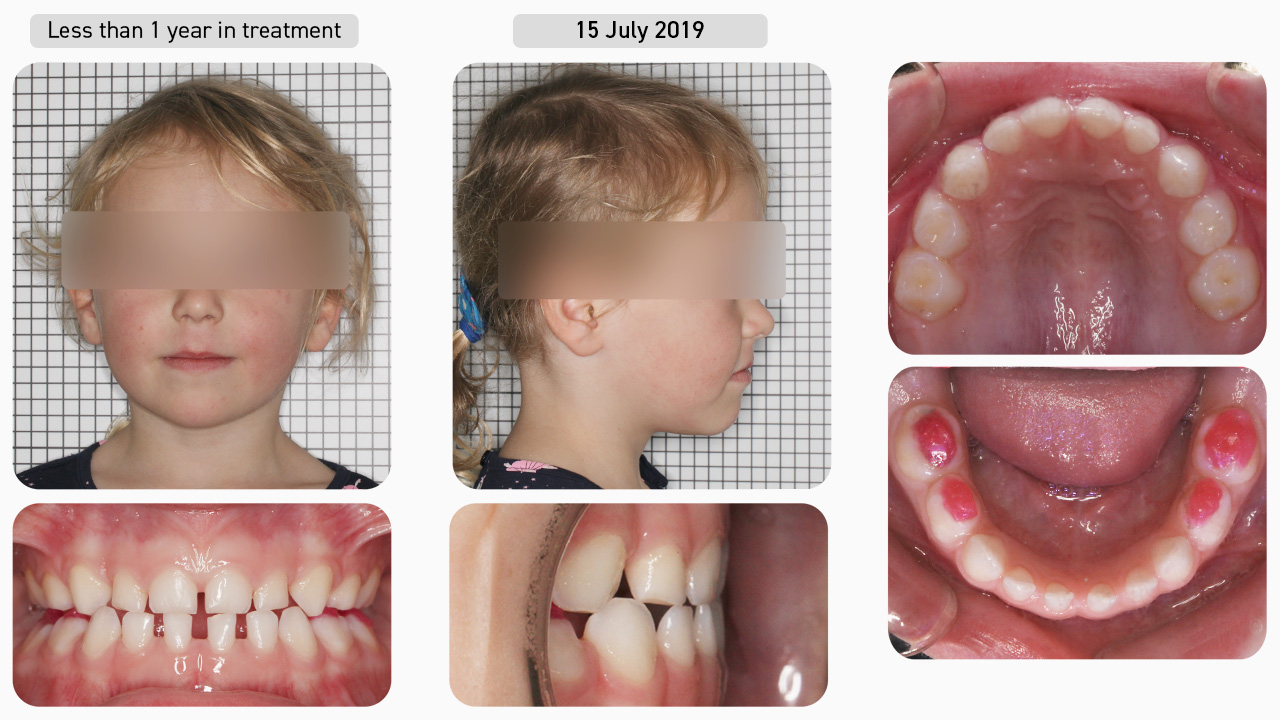
Treatment Complete
This patient ended up needing more than six months of treatment to achieve the desired results due to compliance. In less than one year, the goals of phase one Myobrace® treatment were achieved. These were to establish nasal breathing, correct the poor myofunctional habits and promote good craniofacial growth and development. The patient then entered into the retention phase of treatment, which involved the use of the i-3H appliance to retain the arch forms, alignment and correct habits, in order for her to continue to develop correctly.
Facial Progression
Now that the breathing and myofunctional disorders have been corrected, not only have the teeth and jaws aligned, but the airway and posture have improved, and the patient is no longer snoring or bruxing (teeth grinding). With good breathing and muscle function established, we expect the patient’s remaining development to continue in a favourable manner.
Treatment Summary
Using the Myobrace® appliances combined with Myolay™ and the simplified Myobrace® Activities program, we have helped this patient to establish nasal breathing, correct her myofunctional habits and, therefore, achieve natural alignment of the teeth in less than 12 months of treatment. Both the anterior and bilateral posterior crossbites are corrected, and there is more spacing between the upper deciduous teeth. Most importantly, the patient is nasal breathing and no longer snoring or bruxing during sleep. With the correct breathing and muscle habits established, we expect the patient to continue to improve in her dental and jaw development as she continues to grow.

Case Study 2
This four-year-old female patient presented with the chief complaint of overjet, incorrect jaw development, and wanting early interceptive treatment. After being presented with the various treatment options, the decision was made to undertake Myobrace® treatment, involving the use of the Myobrace® appliances, and given her young age, a simplified Myobrace® Activities program. For children below the age of five, we acknowledge that absolute compliance may be unrealistic, therefore, Myobrace® treatment is divided into two phases. Phase one is a six-month treatment program, aimed at early interception of mouth breathing and myofunctional disorders, with the goals of treatment being to establish nasal breathing and begin habit correction in order to promote good craniofacial growth and development. At age six or seven, the patient is then re-evaluated for consideration of phase two.
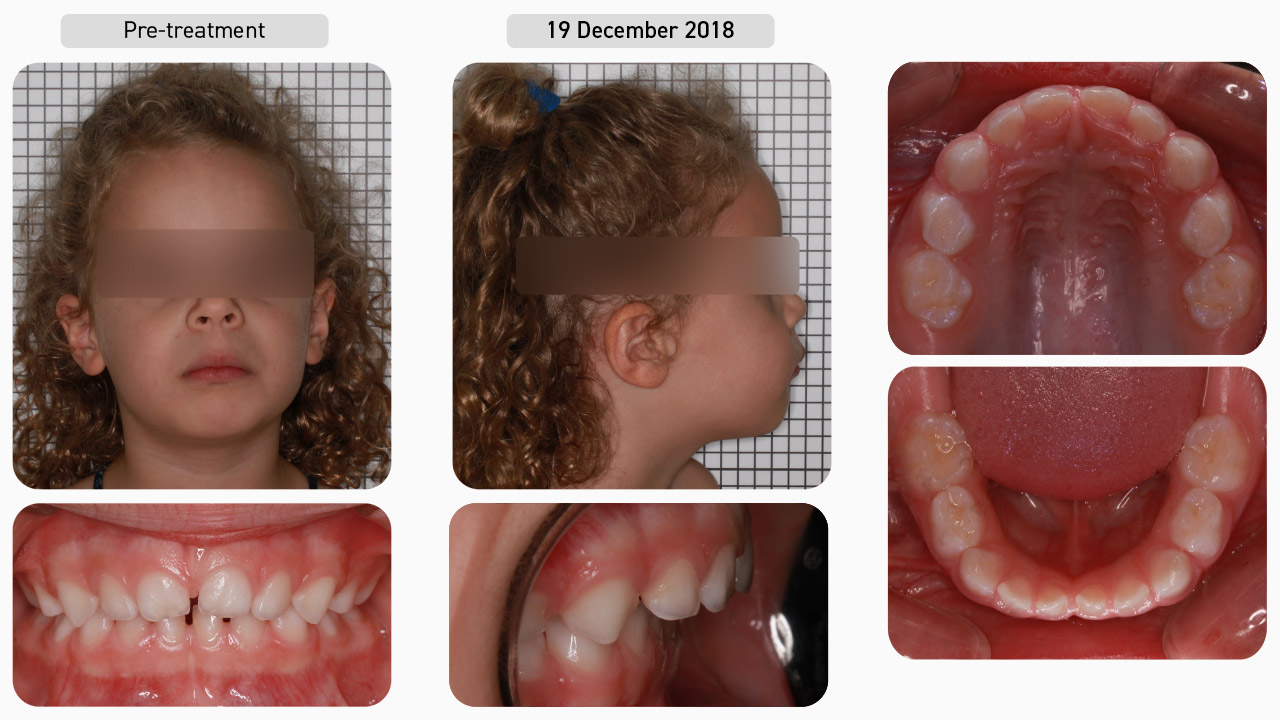
Pre-treatment
Conducting a Myofunctional Orthodontic Evaluation (MOE), we documented that this patient had a retruded mandible with increased overjet. The upper arch was slightly narrow with retroclined anterior teeth, and the lower arch was flattened. Her poor myofunctional habits included mouth breathing with low tongue posture and a reverse swallow. Since the patient was in the primary dentition, her treatment began with the Myobrace® for Juniors.
Dental Progression
She started with the J1 appliance to establish nasal breathing and begin the correction of myofunctional habits. Once her breathing function had improved and she was consistently retaining the J1 overnight, she progressed onto the J2 appliance, focusing on arch development and continued habit correction. Notice the reduction in overjet in less than five months of treatment.
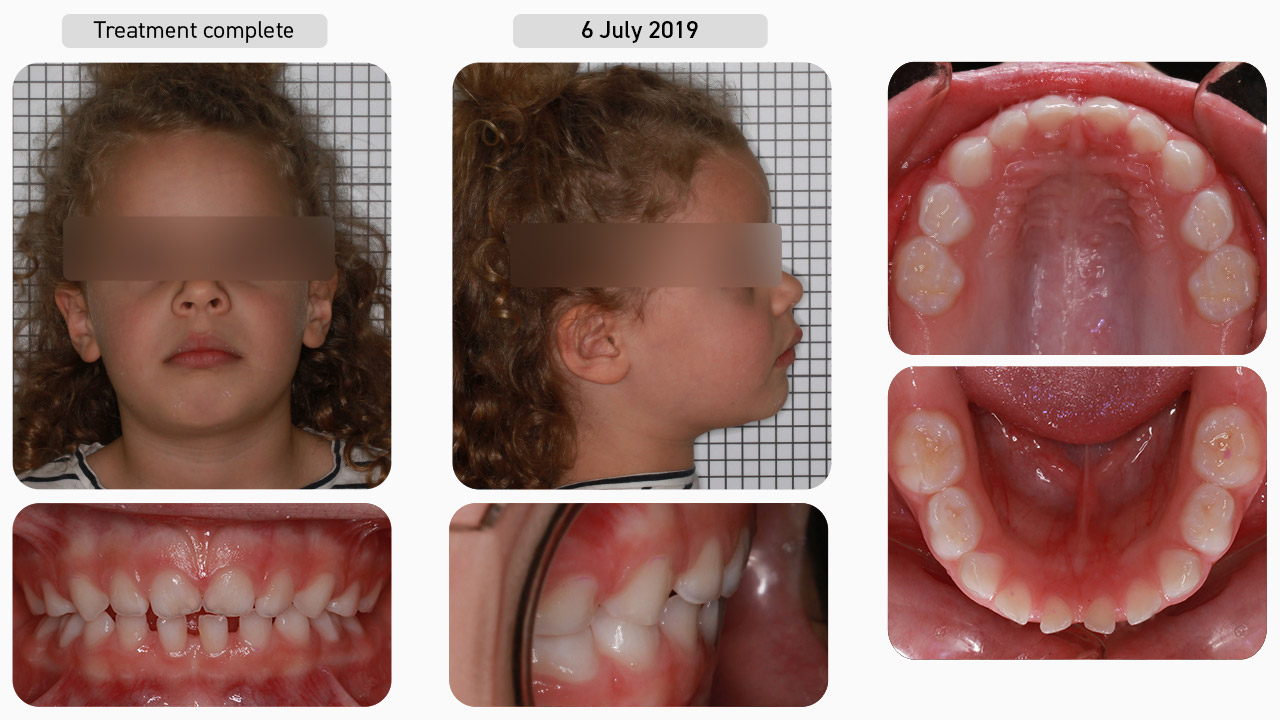
Treatment Complete
After only six months of phase one Myobrace® treatment, the goals of treatment were achieved. These goals were to establish nasal breathing, begin habit correction and promote good craniofacial growth and development. The upper and lower arch forms are broader and rounder, and the overjet has been significantly reduced. As a result, the lower jaw has moved forward and the airway improved. The patient was then entered into the retention phase of treatment, involving the use of the J3 appliance to retain the arch forms, alignment and correct habits, allowing her to continue to develop correctly as she grows.
Resources
Appliance Instructions
Downloadable pdf document with instructions specifically for the J2.
Download ResourceMyobrace® Appliance Catalogue
Downloadable pdf document detailing the Myobrace® appliance range.
Download Resource